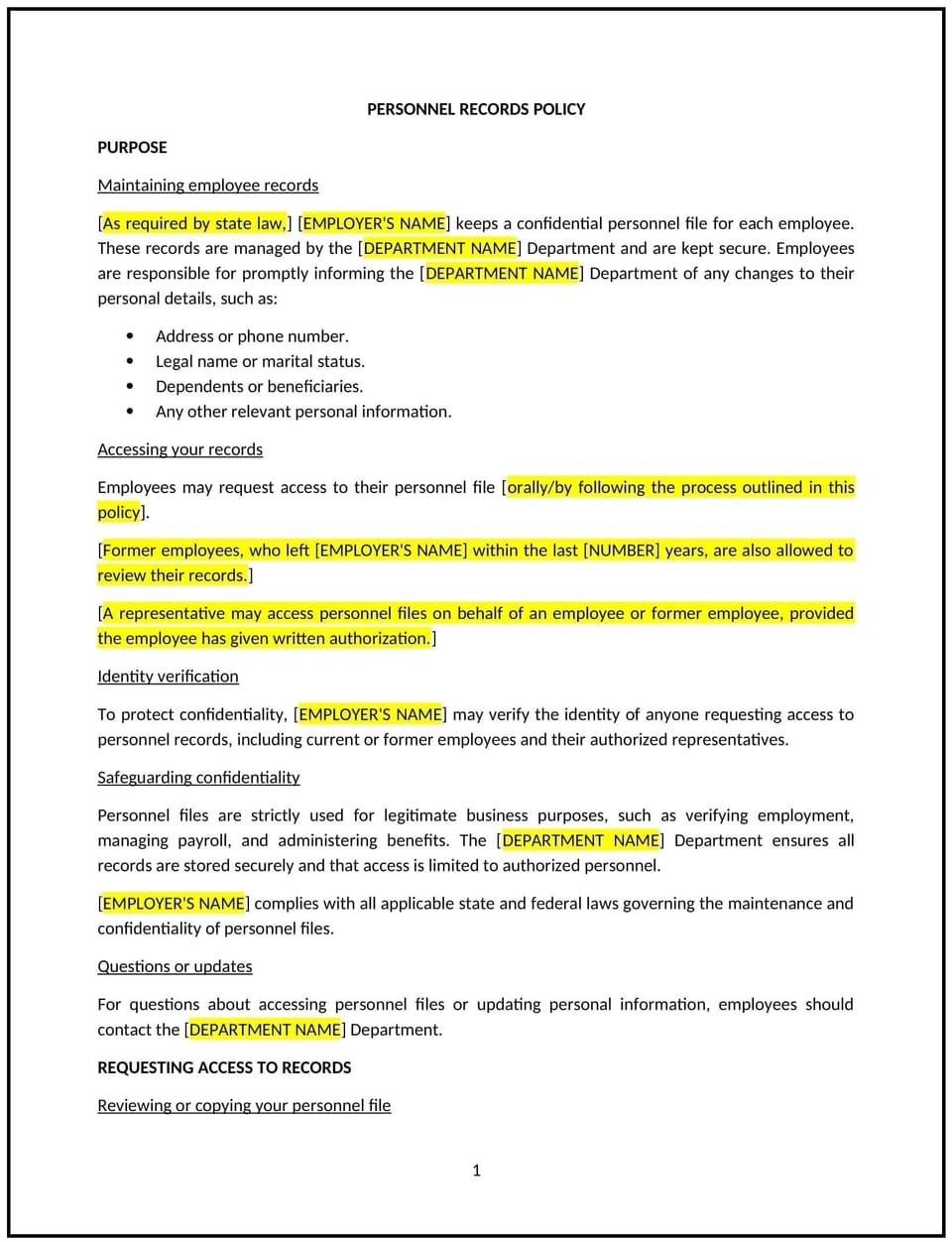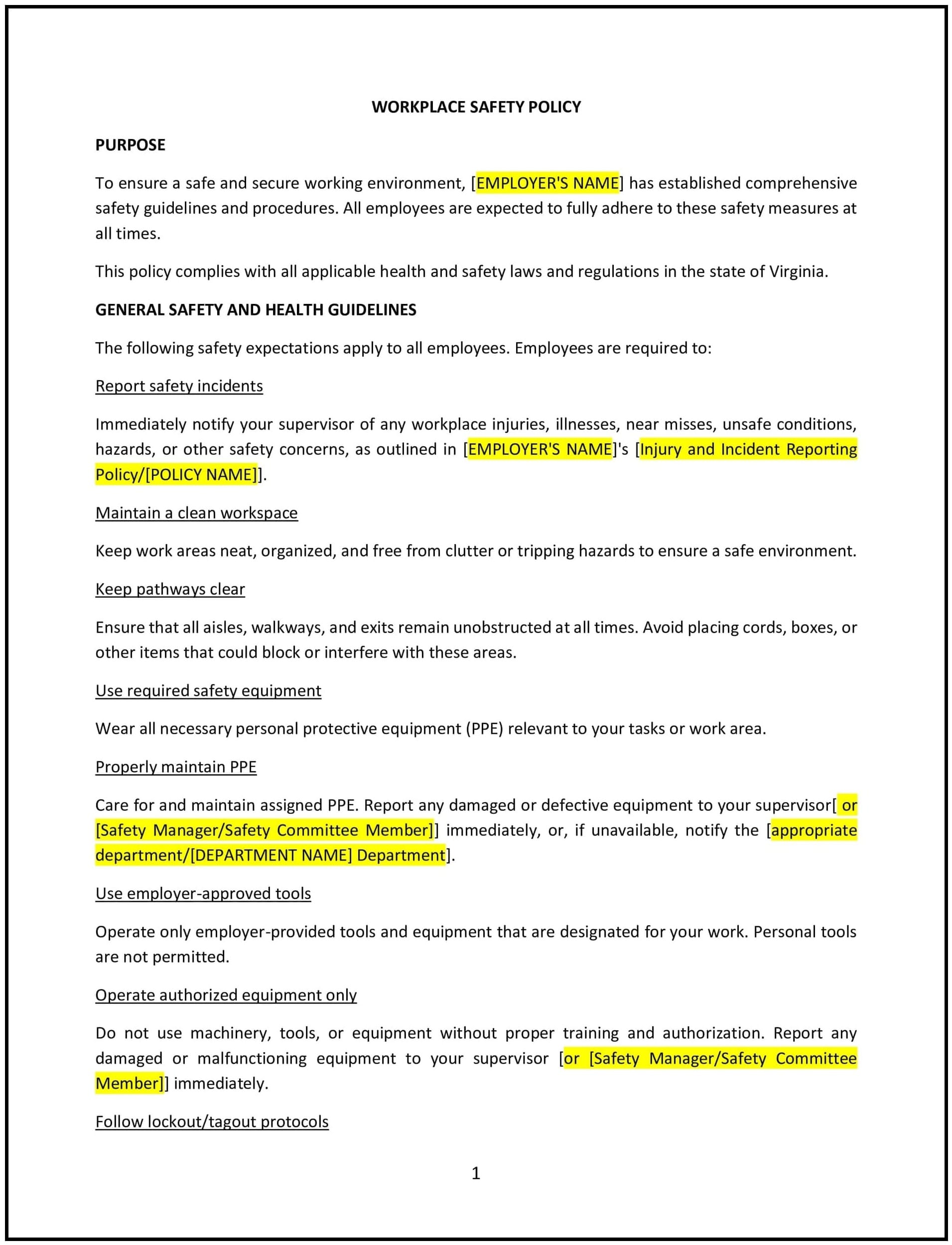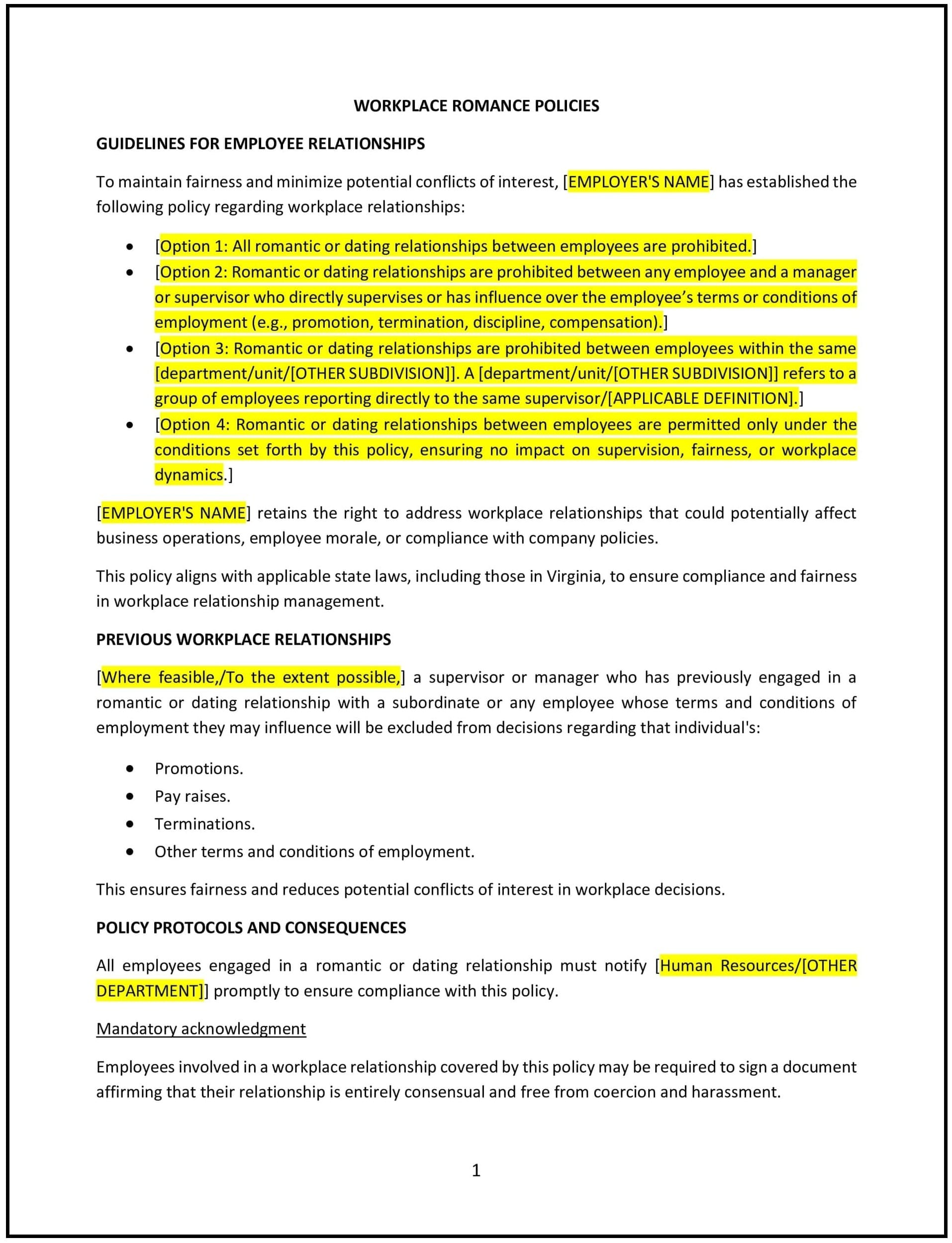Personnel records policy (South Dakota): Free template

Personnel records policy (South Dakota)
This personnel records policy is designed to help South Dakota businesses establish guidelines for managing employee records. It outlines procedures for collecting, storing, and accessing personnel records.
By adopting this policy, businesses can maintain accurate records, protect employee privacy, and align with general best practices for recordkeeping.
How to use this personnel records policy (South Dakota)
- Define personnel records: Explain what constitutes personnel records, such as employment applications, performance reviews, and payroll information.
- Establish collection procedures: Specify how personnel records will be collected, including consent and transparency requirements.
- Outline storage and access controls: Provide guidelines for securely storing records and limiting access to authorized personnel.
- Address record retention: Specify how long records will be retained and procedures for secure disposal.
- Train employees: Educate staff on the policy and their responsibilities for managing personnel records.
- Monitor implementation: Regularly review recordkeeping practices to ensure adherence to the policy.
- Review and update: Assess the policy annually to ensure it aligns with evolving business needs and recordkeeping standards.
Benefits of using this personnel records policy (South Dakota)
This policy offers several advantages for South Dakota businesses:
- Maintains accurate records: Demonstrates a commitment to organized and up-to-date recordkeeping.
- Protects employee privacy: Ensures sensitive information is stored securely and accessed only by authorized personnel.
- Reduces risks: Helps prevent data breaches, identity theft, and other security incidents.
- Builds trust: Shows employees that the business values their privacy and confidentiality.
- Supports best practices: Aligns with industry standards for personnel record management.
Tips for using this personnel records policy (South Dakota)
- Communicate the policy: Share the policy with employees and include it in training materials.
- Provide training: Educate staff on the importance of managing personnel records securely and responsibly.
- Monitor implementation: Regularly review recordkeeping practices to ensure adherence to the policy.
- Address issues promptly: Take corrective action if records are mishandled or accessed improperly.
- Update regularly: Assess the policy annually to ensure it aligns with evolving recordkeeping standards.
Q: How does this policy benefit businesses?
A: By managing personnel records effectively, businesses can maintain accuracy, protect privacy, and reduce risks.
Q: What are examples of personnel records?
A: Examples include employment applications, performance reviews, payroll information, and disciplinary records.
Q: How long should businesses retain personnel records?
A: Retention periods vary by record type, but businesses should follow industry standards and business needs.
Q: Can employees access their personnel records?
A: Yes, employees should have access to their records upon request, as outlined in the policy.
Q: How often should businesses review this policy?
A: Businesses should review the policy annually or as needed to ensure it aligns with evolving recordkeeping standards.
This article contains general legal information and does not contain legal advice. Cobrief is not a law firm or a substitute for an attorney or law firm. The law is complex and changes often. For legal advice, please ask a lawyer.


